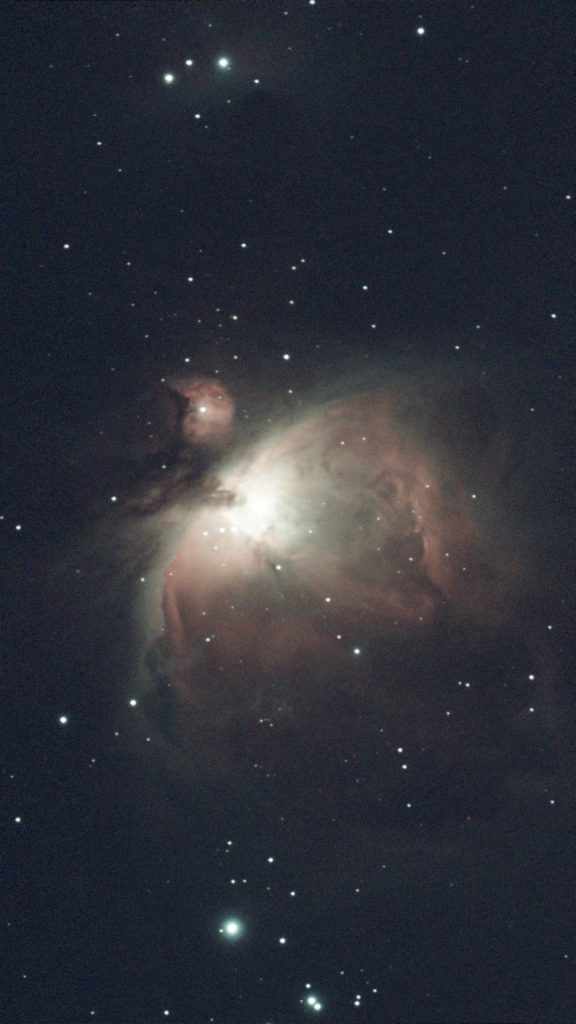The Planet Parade
You may have heard recent mention in the media of a planetary alignment, or planetary parade, taking place across our night skies. It sounds extraordinary, and it is, but it may not be exactly what you expect. Throughout January and into February, we have six of our planets stretching across the sky after dusk. However, two of them, Uranus and Neptune, can only be seen through binoculars or a telescope. The planets aren’t really in a line either, they’re unevenly spread across the sky, following the Sun’s arc from east to west, that astronomers call the ecliptic. There isn’t one specific day to see this, so have a look up any opportunity you get over the next few weeks. Towards the end of February, Mercury will join the group, and we will amazingly have all seven of our solar system planets in the night sky simultaneously.
It isn’t unusual to see a few planets in the sky at once, but it is unusual to see six or more. This only happens on average every 10 to 20 years. These alignments occur due to the specific orbital paths and speeds of the planets around the Sun, occasionally bringing them into the same region of the sky from our perspective on Earth. We have been quite lucky in recent years because in August of 2024 we had Mercury, Mars, Jupiter, Saturn, Uranus and Neptune visible together, and in June 2022 we also had Mercury, Mars, Venus, Saturn and Jupiter shining each night.
Venus can be seen in the southwest just after sunset, shining brighter than any other star or planet. Wait for the sky to darken a bit more and you should see Jupiter appear in the southeast and Saturn will show up just below Venus. Mars isn’t quite as bright as our three brightest planets, but it does give off a slight reddish hue that should be easily recognisable and it can be found to the left of Jupiter. To find Uranus you will need a pair of binoculars or a small telescope. Uranus will be in the south, to the right of Jupiter. Neptune will be visible through a small telescope between Venus and Saturn. The positions of the planets will vary slightly throughout February, so use an app like Stellarium to help you pinpoint their exact locations. Mercury is the closest planet to the Sun, making it quite difficult to observe. From Earth, we don’t see it move very far away from our star, and we only have handfuls of days at a time where it is possible to observe the small planet without the Sun getting in the way. Around February 28th, Mercury will be at its furthest point from the Sun and will be visible just after sunset for a short period of time. If you want to see seven planets in the sky at once, this is your day to do so!
UN International Day of Woman and Girls in STEM
On February 11th we celebrate the UN International Day of Women and Girls in Science, a crucial reminder of the need for greater gender equality in STEM (Science, Technology, Engineering, and Mathematics). Science shapes our world, from medical breakthroughs to space exploration, yet women remain underrepresented in many fields. Women are typically given smaller research grants than their male colleagues and, while they represent 33.3% of all researchers, only 12% of members of national science academies are women. In cutting edge fields such as artificial intelligence, only one in five professionals (22%) is a woman. Female researchers tend to have shorter, less well-paid careers. Their work is underrepresented in high-profile journals and they are often passed over for promotion.
Celebrating this day helps highlight the contributions of women scientists, both past and present, while also encouraging the next generation of girls to pursue careers in science. Diverse perspectives drive innovation and ensuring that women have equal opportunities in STEM benefits society. Women and girls represent half of the world’s population and gender equality is essential to achieving full human potential and sustainable development.
The Orion Nebula
If you have ever wanted to get a glimpse of a deep sky object for yourself but don’t own a large telescope, Orion’s Nebula is a great target. Also known as M42, this nebula is over 1000 lightyears away in the Milky Way and can be found just below the familiar trio of bright stars that make up Orion’s Belt, in the distinctive Orion constellation. This nebula can actually be seen with just your eyes as a faint smudge in the sky, but with just a pair of binoculars you can pick up much more detail. Orion can be found high in the southern sky every evening and will be visible all throughout the month. We observed Orion’s Nebula just a week ago with our telescope here on the top of Blackrock Castle.

Wishing you starry skies!
Blog post written by Jane Dooley


